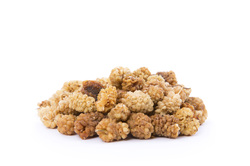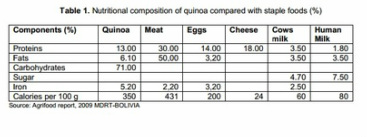wellness: mind and body
health food trends
WHITE MULBERRIES

Dried White Mulberries are rich in antioxidants.
Tasting like a cross between figs, raisins and dried raspberries but drier, white mulberries are a growing presence in natural food stores around Asia. Going at no less than $20 per packet in health food stores, Evolve Asia looks into why this nutrient-rich superfood, compared to other berries, is so highly valued.
Like grapes, these berries contain resveratrol, the antioxidant and cardio-tonic popularly associated with red wine and the french diet. In addition, these berries are an excellent source of B-complex vitamins and vitamin C. They are rich in iron (rare for berries) and are also a good source of minerals like potassium, manganese, and magnesium.
White mulberries are convenient to eat on the go as a healthy snack and can also be used in pie fillings, mulberry muffins, cookies, cakes, etc.
Like grapes, these berries contain resveratrol, the antioxidant and cardio-tonic popularly associated with red wine and the french diet. In addition, these berries are an excellent source of B-complex vitamins and vitamin C. They are rich in iron (rare for berries) and are also a good source of minerals like potassium, manganese, and magnesium.
White mulberries are convenient to eat on the go as a healthy snack and can also be used in pie fillings, mulberry muffins, cookies, cakes, etc.

